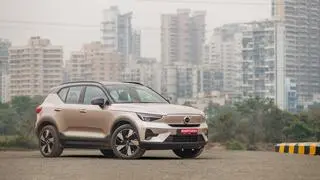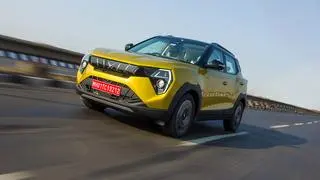Anil Dua entered a literal tug-of-war arena when he joined Hero Honda as marketing head in April 2006. Its rival, Bajaj Auto, was zeroing in on the top slot and the gap between the two was barely 30,000 units a month.
“The mood was distinctly combative,” recalls Dua in a telephone interview. The following month saw Hero clock up 3.03 lakh units after which it decided to go flat out with a renewed brand strategy. It has not looked back since.
As Dua, Senior VP (Sales & Marketing), gets set to bid adieu to Hero MotoCorp next Tuesday, he has every reason to feel good. “It has been a dream run and I am leaving at a time when the company is firing on all cylinders,” he says. After all, the company wrapped up May 2014 with sales of over six lakh bikes and scooters. Today, it stands head and shoulders over the rest in the market.
For Dua, the eight-year stint has been memorable and goes beyond just numbers and market share. Two years after he came on board, the company decided to celebrate 2008-09 as its 25{+t}{+h} year. This period, which was a tough phase for the industry, saw the opening of the Haridwar plant in April 2008.
It was also the time Hero Honda launched its Dhak Dhak Go campaign ahead of Diwali in 2008 featuring Hrithik Roshan and Priyanka Chopra along with a clutch of top cricketers. In this environment, airing a three minute commercial was unheard of though the company had spent only for one minute. It was a win-win situation all the way.
“The result was that we created a huge record in Diwali and our showrooms had to deploy cops to keep the crowds in check,” Dua says. It was clear that the commercial had done the trick. It challenged conventional wisdom and redefined the new world of advertising.
Brand refurbishment Brand-building had already become an important part of Hero’s agenda months into Dua’s joining. By October 2006, a decision was made to go in for brand differentiation and the first step was to rejuvenate the 150cc CBZ as Xtreme. Teaser commercials preceded its actual launch and care was taken to ensure that the 150cc Hunk which was launched in 2007 was different from the Xtreme in identifying its target audience. Where one was macho and solid, the other was subtle and stylish. Likewise, the Super Splendor and Glamour were positioned differently as also the Splendor and Passion.
And while it is true that the Splendor and Passion perhaps epitomised Hero during Dua’s early days in 2006, this is no longer the case in later years as the company created an array of non-cannibalising products. This is borne by the fact that the country’s top three selling bikes — Splendor, Passion and HF Dawn — are from Hero.
Dua is as pleased with the scooter story which began with the Pleasure in early 2006. At that point in time, scooters were only ten per cent of the market and hardly growing thanks to the motorcycle onslaught. The Pleasure was launched in nine different colours with women as the target customers and a modest sales target of 3,000 units a month. Today, the Pleasure clocks ten times as much and, as Dua says, has well and truly empowered women.
Yet, Hero was only too aware that men also needed a ‘cool’ scooter and it was with this objective in mind that the Maestro made its debut in 2012. Bollywood star, Ranbir Kapoor, was roped in as brand ambassador and the move paid off. The Pleasure and Maestro do combined sales of nearly 70,000 units each month and are next in place after the all-powerful Honda Activa.
The other big step during Dua’s tenure was getting into rural markets. A specific vertical was created in 2007 and teams from the company met opinion leaders in villages, right from the sarpanch to the headmaster to offer mobility solutions. Today, rural India contributes to 48 per cent of the company’s business.
The extent of its build-up can be gauged from the fact that where 2,300 touch points were created across the country during the first 23 years, this doubled to 4,500 points between 2007 and 2010. At present, there are over 6,000 touch points accompanied by service outlets and work stations.
New identity Another high point of Dua’s innings at Hero was the re-branding exercise after parting ways with Honda in 2010. While this seems a “deceptively simple subject”, re-branding is an art and science which must be brought together, he says.
Hero MotoCorp and Hum Mein Hai Hero became a reality, barely eight months after the Honda split, in August 2011. The dealer network soon incorporated the new identity while the product line-up was made public. Dua and his team also worked relentlessly to launch a slew of initiatives which included a five-year warranty, campaigns on social media, active participation in sports etc. All this has paid off in keeping Hero right on top even while Honda is hot on its heels.







Comments
Comments have to be in English, and in full sentences. They cannot be abusive or personal. Please abide by our community guidelines for posting your comments.
We have migrated to a new commenting platform. If you are already a registered user of TheHindu Businessline and logged in, you may continue to engage with our articles. If you do not have an account please register and login to post comments. Users can access their older comments by logging into their accounts on Vuukle.